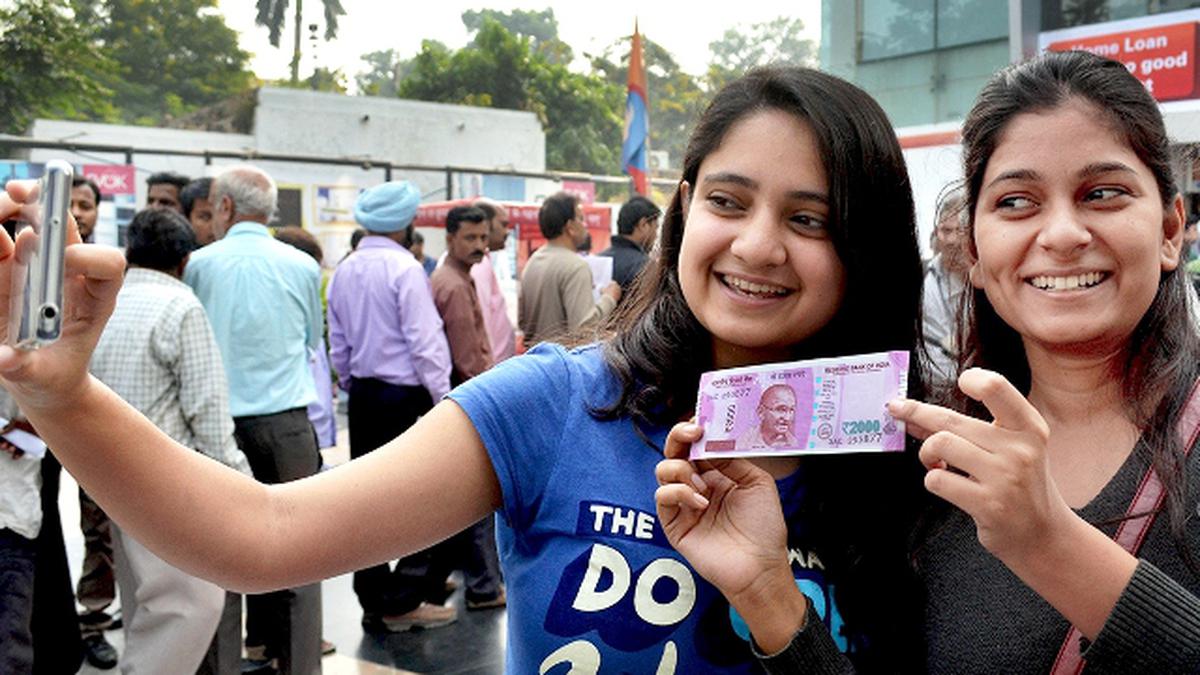Deposit and Exchange Guidelines for 2,000 Notes: RBI’s Clean Note Policy
Withdrawal of 2,000 Notes: Operational Convenience and Extended Timeline for Public
New Delhi: Deposit and Exchange Guidelines for 2,000 Notes: RBI’s Clean Note Policy -In a move aligned with its “Clean Note Policy,” the Reserve Bank of India (RBI) has announced the withdrawal of ₹2,000 denomination banknotes from circulation, while emphasizing that these notes will remain legal tender. This decision, reminiscent of the demonetization period, aims to maintain the integrity of the currency and enhance the efficiency of the banking system.
It is worth noting that a similar withdrawal of banknotes from circulation was implemented during 2013-2014. The RBI has advised the public to either deposit their ₹2,000 notes into their bank accounts or exchange them for banknotes of other denominations at any branch. While this decision may cause temporary inconvenience and anxiety, the central bank aims to ensure a smooth transition and continued functionality of the currency. Deposit and Exchange Guidelines for 2,000 Notes: RBI’s Clean Note Policy

Smooth Deposit and Exchange Process for ₹2,000 Notes
The RBI has clarified that the process of depositing ₹2,000 notes into bank accounts can be done in the usual manner, without any restrictions, and in compliance with existing instructions and relevant statutory provisions. Individuals can utilize their regular banking channels to deposit these notes, ensuring a smooth and unrestricted process.
To facilitate operational convenience and prevent disruption to regular banking activities, the RBI has announced that the exchange of ₹2,000 notes for banknotes of other denominations can be conducted at any bank starting from May 23, 2023, with a limit of ₹20,000 per transaction. This measure aims to ensure a smooth transition for the public during the withdrawal process.Deposit and Exchange Guidelines for 2,000 Notes: RBI’s Clean Note Policy
In order to provide sufficient time for individuals to complete the necessary transactions, the RBI has instructed all banks to offer deposit and/or exchange facilities for ₹2,000 notes until September 30, 2023. This extended timeline allows for a time-bound completion of the exercise while minimizing inconvenience for the public.
To ensure compliance with the withdrawal process, the RBI has issued separate guidelines to banks, outlining the necessary procedures and instructions to be followed during the deposit and exchange of ₹2,000 notes. These guidelines will assist banks in effectively managing the transition and assisting customers with the necessary transactions.
Effective from May 23, 2023, individuals can exchange ₹2,000 notes up to the limit of ₹20,000 at the 19 Regional Offices of the RBI that have “Issue Departments.” Banks have been instructed to discontinue the issuance of ₹2,000 notes immediately.
The RBI statement encourages the public to utilize the period until September 30, 2023, to deposit and/or exchange their ₹2,000 notes. This provides individuals with ample time to complete the necessary transactions.

The introduction of the ₹2,000 banknote in November 2016 was primarily intended to address the currency requirements of the economy swiftly following the withdrawal of legal tender status for all ₹500 and ₹1,000 banknotes in circulation at that time, as stated by the banking regulator.
Significant Reduction in Circulation of Rs 2,000 Notes
The objective of introducing ₹2,000 notes was considered fulfilled once banknotes in other denominations became widely available. Consequently, the printing of ₹2,000 notes was halted in 2018-19. According to the RBI, approximately 89% of the ₹2,000 notes were issued prior to March 2017 and have now reached their estimated lifespan of 4-5 years.
The total value of ₹2,000 notes in circulation has significantly reduced from its peak of ₹6.73 lakh crore (37.3% of total notes in circulation) as of March 31, 2018, to ₹3.62 lakh crore, accounting for only 10.8% of total notes in circulation as of March 31, 2023, as stated by the RBI.
The central bank noted that the ₹2,000 denomination is not commonly used for transactions, and an adequate stock of banknotes in other denominations remains available to meet the currency requirements of the public.Deposit and Exchange Guidelines for 2,000 Notes: RBI’s Clean Note Policy

Karthik Srinivasan, Senior Vice-President, Group Head, Financial Sector Ratings at ICRA Ltd., mentioned that the deposit accretion of banks could see a marginal improvement in the near term, similar to the experience during demonetization. This, in turn, could alleviate the pressure on deposit rate hikes and potentially lead to a moderation in short-term interest rates.













Post Comment
You must be logged in to post a comment.